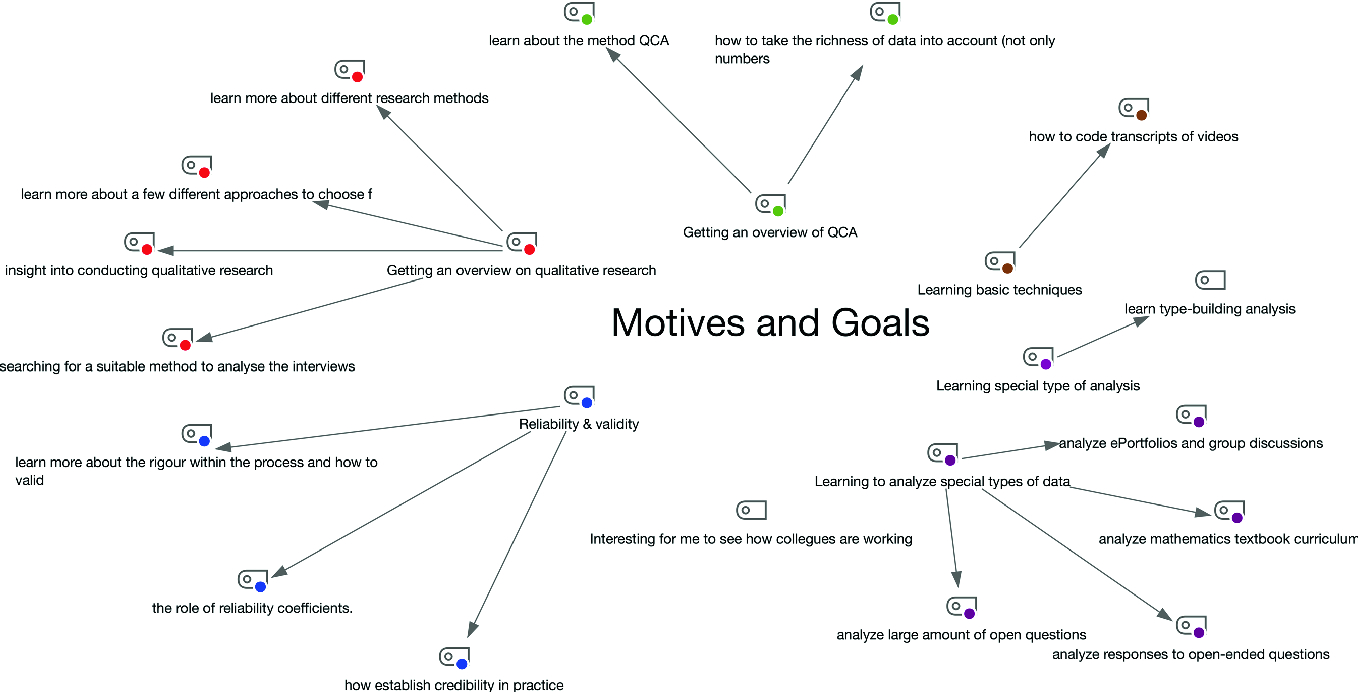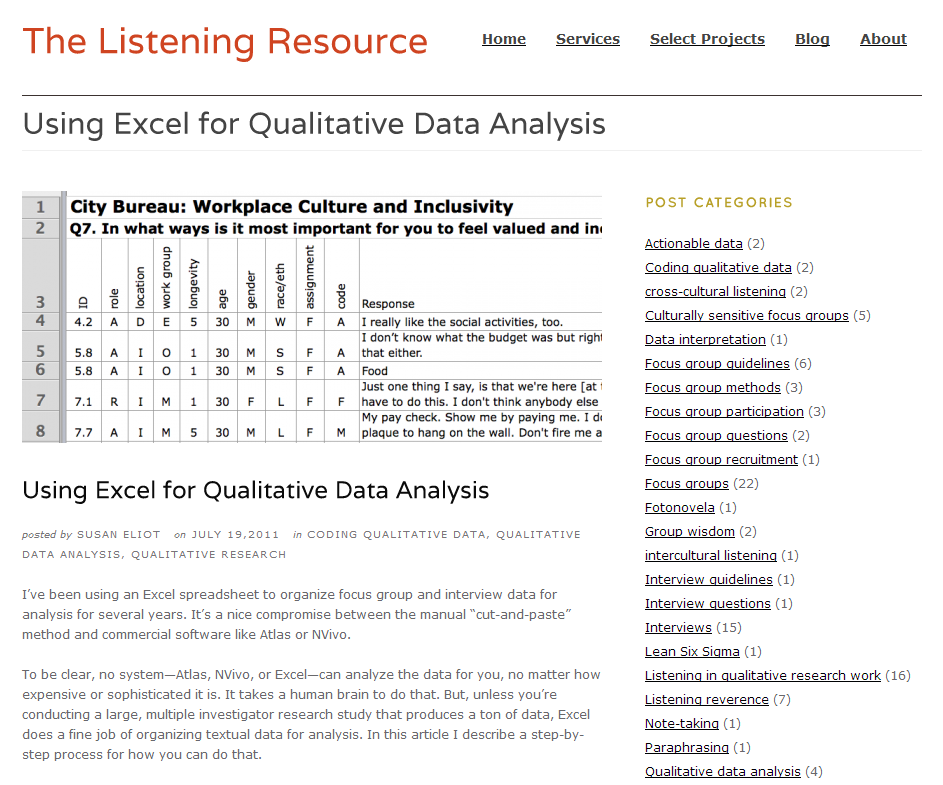

In short, QDA is used to answer questions about the “how” and “why” of a situation, rather than “how many/much”. QDA emphasizes the experiences, opinions, behaviors, and social contexts of research participants. However, the main objective of qualitative data analysis is always to get some form of explanation, understanding, or interpretation of social phenomena. QDA methods are also used in less academic contexts, such as business management and market research, using qualitative data collected from a variety of desk- or fieldwork methods. QDA methods are used in many academic fields, such as sociology, psychology, political science, medicine, and educational sciences, amongst others, to conduct scientific research. Qualitative data analysis (QDA), correspondingly, is a non-numerical mode of analyzing this data. The data gathered regarding these factors can then be used to generate hypotheses, which can then be investigated further using larger samples and quantitative analysis methods. Here, qualitative methods, such as participant observations and interviews, can be used to uncover the main factors that influence why certain things in social or natural environments are the way they are.

Choosing to work with qualitative data is especially appropriate when little is known about a certain topic. Of course, it is also possible to conduct mixed methods data analyses, in which qualitative data is supplemented by quantitative methods (by adding information from an additional questionnaire, for example) or in which quantitative data is supplemented by qualitative methods (by the addition of focus group discussions, for example).

Common examples of qualitative data are interview transcripts, texts (such as books or articles), field notes, images, video, and online data, such as tweets or forum discussions. In general, qualitative research methods are used to gather information from non-numeric data sources (as opposed to numbers, i.e. These methods differ in the data sources they draw on, how the data is collected and analyzed, and how the analysis results are interpreted. Qualitative or quantitative data collection methods: the method you choose – or whether you use a combination of both – will depend on the nature of your research question and the analytical objectives of your project. What is Qualitative Data Analysis? Qualitative Data
#Qualitative data analysis best practices how to#
You may also send us your questions via email at Most e-mails will be answered within one business day (messages received on Friday will not be answered until Monday).Learn how to analyze qualitative data and conduct qualitative research with the support of software in this guide to gathering and analyzing data with MAXQDA. You can also make an appointment to meet with a qualitative data specialists by yourself or with your group via this appointment form: For help deciding which qualitative data analysis software to use, attend our general monthly information session: What Qualitative Data Analysis (QDA) Software to Use? Synchronous Consultations We offer a number of classes each month, which can be found at. We recommend you access the VCL using Chrome or Firefox, given we have had issues with the Safari browser. We have several incidents of loss to data due to issues in saving materials, therefore it is best for users to export the project bundle if they want a copy on their personal computer. Warning regarding the VCL: Please be sure you are familiar with successfully saving your when working on the VCL before you begin coding. ATLAS.ti is also available on the Virtual Computer Lab for NYU students. Currently, MAXQDA and ATLAS.ti installed on computers in the NYU Bobst Library's Research Commons on the 5th floor. For your qualitative data analysis needs, Data Services supports Taguette, MAXQDA, and ATLAS.ti software applications.


 0 kommentar(er)
0 kommentar(er)
